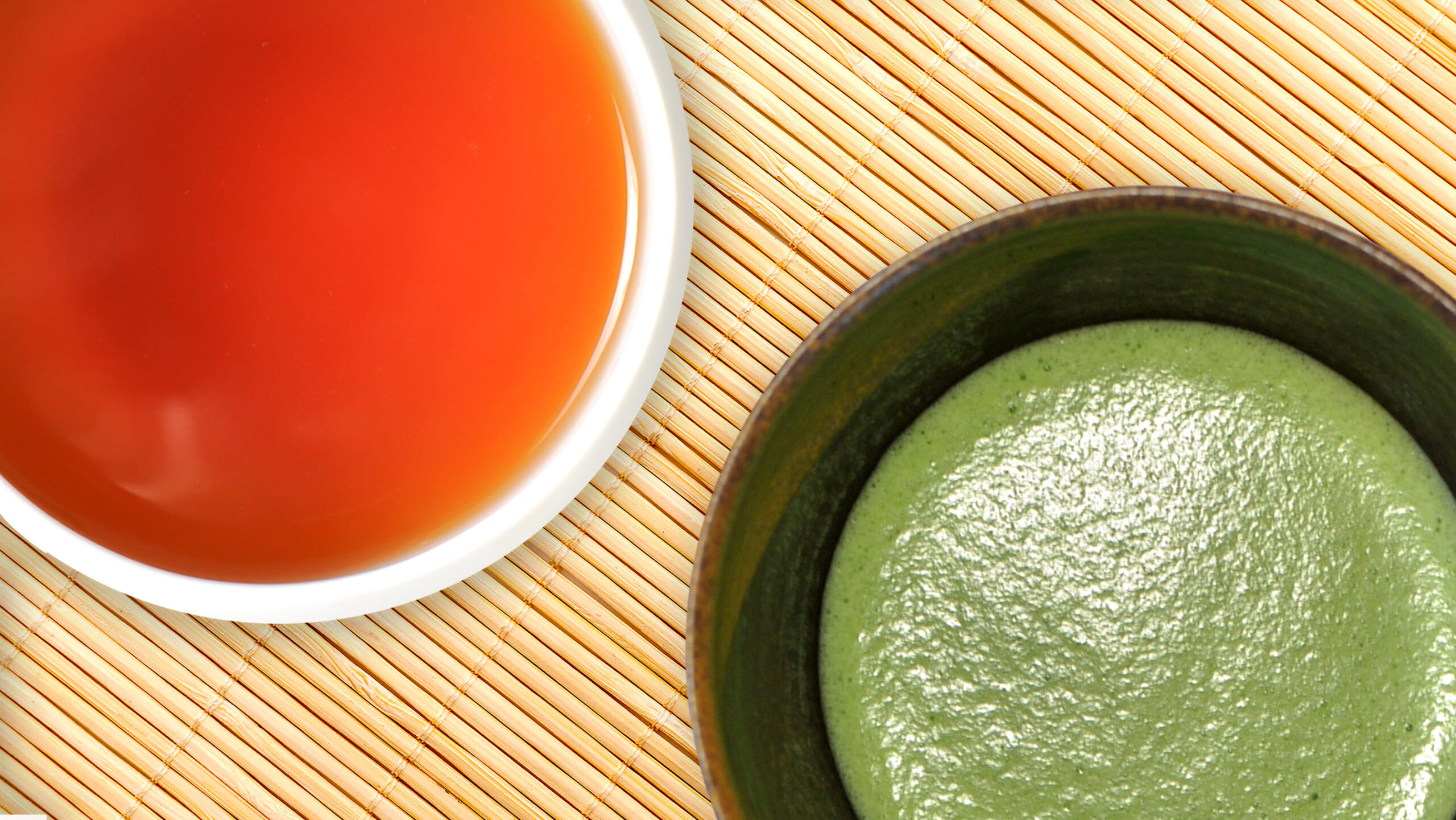


Japanese green teas have captivated tea lovers worldwide with their rich flavors and numerous health benefits. Among the most popular are Hojicha and Matcha, each offering a unique experience. Whether you’re a seasoned tea enthusiast or new to Japanese teas, this guide will help you explore the differences between Hojicha and Matcha and choose the one that best suits your taste and lifestyle.
Hojicha is a relatively recent addition to the world of Japanese teas, originating in Kyoto in the 1920s. It is made by roasting green tea leaves, stems, and twigs, typically from lower-grade teas like Bancha. The roasting process gives Hojicha its distinctive reddish-brown color and smoky aroma. For a general overview of Hojicha, please refer to the article ‘Exploring Hojicha: A Toasty Twist on Traditional Green Tea‘ and ‘Hojicha Through the Ages: From Traditional Origins to Modern Day.’
Matcha, on the other hand, has a long-standing history in Japanese tea ceremonies. It is produced by shading green tea plants before harvest, which increases the chlorophyll content and results in vibrant green leaves. These leaves are then ground into a fine powder. The process enhances Matcha’s umami flavor and nutrient profile. For a general overview of matcha, please refer to the article ‘Discovering Matcha: The Essence of Japanese Green Tea.’

Hojicha is known for its mellow, nutty, and slightly caramel-like flavor. The roasting process reduces bitterness and astringency, making it a soothing and accessible tea. Its warm, comforting taste makes it a favorite for relaxing evenings.
Matcha offers a rich, vegetal flavor with a notable umami quality. It has a slightly sweet and creamy taste, with a vibrant green color that reflects its high chlorophyll content. The flavor can range from mildly sweet to robust, depending on the grade and quality.

Both Hojicha and Matcha are packed with antioxidants, promoting overall health and well-being. However, they offer distinct benefits:
Hojicha is low in caffeine, making it an excellent choice for those sensitive to caffeine or looking for a calming tea to enjoy in the evening. Its mild flavor is gentle on the stomach, making it suitable for all ages. If you would like to learn more about the health benefits of Hojicha, please check out the article ‘6 Surprising Health Benefits of Hojicha: The Ultimate Guide to Japan’s Roasted Green Tea.‘
Matcha, being rich in caffeine, is perfect for a morning pick-me-up. It provides a steady energy boost without the jittery effects of coffee, thanks to the presence of L-theanine, which promotes relaxation and focus. Matcha is also known for its detoxifying properties, aiding in weight management and boosting metabolism. If you would like to learn more about the health benefits of matcha, please check out the article ‘Matcha Magic: 6 Transformative Health Benefits of Japan’s Green Wonder.‘

Hojicha is versatile in both traditional and modern culinary applications. It can be enjoyed as a warm or iced tea and is commonly used in lattes, desserts, and savory dishes. The roasted flavor adds depth to various recipes, making it a popular ingredient in Japanese and fusion cuisines. If you would like to learn more about the uses of Hojicha, please refer to the article ‘Hojicha: From Traditional Tea to Modern Culinary Ingredient.’
Matcha is celebrated for its ceremonial use and as a superfood. It can be whisked into a frothy tea, blended into smoothies, or used in baking and cooking. Matcha’s vibrant color and unique flavor make it a popular choice for innovative recipes, from matcha lattes to green tea-flavored sweets.

Both teas hold a special place in Japanese culture. Hojicha is often enjoyed as an everyday tea, reflecting a relaxed and comforting lifestyle. It is commonly served after meals and is beloved for its soothing qualities.
Matcha is deeply rooted in Japanese tradition, particularly in tea ceremonies where it symbolizes mindfulness and harmony. Its preparation and consumption are considered a form of art, emphasizing the beauty of simplicity and the importance of presence.

Choosing between Hojicha and Matcha depends on your personal preferences and needs. If you seek a low-caffeine, gentle tea with a comforting flavor, Hojicha is an excellent choice. For those looking for a vibrant, energizing tea with a rich taste, Matcha offers a unique and healthful experience.
Hojicha and Matcha each bring their unique qualities to the table, offering diverse flavors and benefits. Whether you prefer the roasted, nutty taste of Hojicha or the vibrant, umami-rich flavor of Matcha, exploring these teas can deepen your appreciation for Japanese tea culture. Try both and discover which one resonates with you!